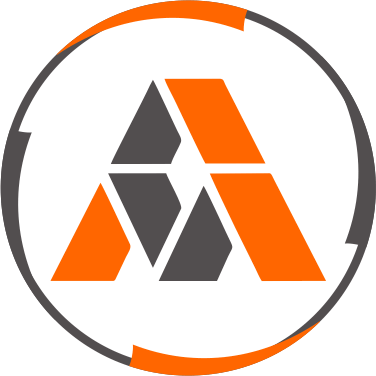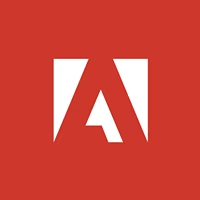Description

ActCAD

Sketchbook
Comprehensive Overview: ActCAD vs Sketchbook
ActCAD and Sketchbook are two distinct software products designed for different purposes and target markets. Here's an overview highlighting their primary functions, target markets, market share, user base, and key differentiating factors:
ActCAD
a) Primary Functions and Target Markets:
ActCAD is primarily a computer-aided design (CAD) software that offers a comprehensive set of tools for 2D drafting and 3D modeling. It is engineered to handle drawing and design tasks for engineering, architecture, and manufacturing projects. ActCAD includes features such as:
- 2D drafting, annotation, and design tools.
- 3D modeling and visualization capabilities.
- Support for various file formats, including DWG, DXF, and DGN.
- A library of standard parts and tools for customization.
The target market for ActCAD includes professionals in architecture, engineering, and construction (AEC), as well as manufacturing and design companies looking for an affordable alternative to more expensive CAD software.
b) Market Share and User Base:
ActCAD competes with other CAD solutions like AutoCAD, but it focuses more on being a cost-effective alternative. While it may not have the large market share of industry giants like AutoCAD, ActCAD appeals to small and medium enterprises (SMEs) and freelancers due to its competitive pricing and rich feature set. Its user base tends to be price-sensitive professionals and firms looking for CAD functionality without a significant financial investment.
c) Key Differentiating Factors:
- Pricing: ActCAD is known for its competitive pricing, making it accessible for small businesses and freelancers.
- Familiar Interface: Designed to be intuitive for those familiar with other CAD software, particularly AutoCAD.
- Perpetual Licensing: Offers a one-time purchase option without mandatory subscription fees, appealing to users seeking long-term solutions.
Sketchbook
a) Primary Functions and Target Markets:
Sketchbook, developed by Autodesk, is a digital drawing program focused on artists and designers. It is known for its intuitive interface and powerful sketching tools. Key features include:
- A wide variety of brushes and pen tools for different artistic styles.
- High-resolution canvas support.
- Layer management for complex drawings.
- Intuitive user interface optimized for touch and pen input.
The target market for Sketchbook includes professional artists, illustrators, graphic designers, and hobbyists who prioritize the sketching and conceptual design process.
b) Market Share and User Base:
Sketchbook has a significant user base, with its appeal extending to both professional artists and casual users due to its availability on multiple platforms, including Windows, Mac, iOS, and Android. As a tool focused on artistic endeavors rather than technical CAD work, Sketchbook's market positioning is distinct from traditional CAD software, making direct market share comparisons with ActCAD challenging.
c) Key Differentiating Factors:
- Artistic Focus: Unlike CAD tools focused on precise measurements and technical drawing, Sketchbook is tailored for free-form art and illustrations.
- Cross-Platform Availability: Sketchbook is available on a variety of platforms, making it versatile for users who work across devices.
- Freemium Model: Offers a basic free version with options to upgrade to more advanced tools and features, allowing casual users to explore before committing financially.
Summary
In summary, ActCAD and Sketchbook serve different purposes and target different markets—engineering and design professionals versus artists and illustrators. ActCAD is a cost-effective CAD alternative, while Sketchbook is a versatile tool for digital art and illustration. Their differentiators lie primarily in their focus, pricing models, platform availability, and target user base.
Contact Info

Year founded :
2006
+91 80 4610 1380
Not Available
India
http://www.linkedin.com/company/actcad-software

Year founded :
Not Available
Not Available
Not Available
Not Available
Not Available
Feature Similarity Breakdown: ActCAD, Sketchbook
ActCAD and Sketchbook are two different software tools catering to different user needs within the realm of design and illustration. Here's a breakdown of their feature similarities and differences:
a) Core Features in Common
1. Design and Creativity Tools:
- Drawing and Editing: Both ActCAD and Sketchbook offer robust drawing and editing capabilities.
- Precision Tools: Each software provides tools that support precision in creating detailed designs, although ActCAD is more geared towards technical precision.
2. User Customization:
- Customizable Workspaces: Both programs allow users to adjust their workspaces to suit personal workflow preferences.
- Tool Customization: Users can customize tool settings in both applications to better fit their specific needs.
3. Multi-Platform Availability:
- Both software are available on multiple platforms, enabling access from different operating systems.
b) User Interfaces Comparison
ActCAD:
- Technical and Structured Layout: The interface is designed similar to traditional CAD platforms, focusing on a ribbon-style layout that organizes a complex array of technical features for easy access.
- Command-Line Interface: ActCAD includes a command-line interface, which is common in CAD software, allowing users to execute commands quickly and efficiently.
Sketchbook:
- Intuitive and Artistic Layout: The interface of Sketchbook is clean and minimalistic, prioritizing ease of use for artists with floating toolbars and a user-friendly design.
- Gesture-Based Navigation: Sketchbook offers gesture-based controls, such as pinch-and-zoom, making it intuitive for touch-enabled devices.
c) Unique Features
ActCAD:
- CAD-Specific Tools: ActCAD is equipped with features like 2D drafting and 3D modeling tools tailored for engineers and architects. It includes features such as 3D solid editing, DWG/DXF compatibility, and data extraction.
- Engineering Standards: The software supports global engineering standards, which is crucial for professional drafting and design.
- Built-In Calculator: ActCAD includes a built-in calculator for design computations and simulations.
Sketchbook:
- Natural Drawing Experience: Sketchbook excels in providing a natural drawing experience with brushes that simulate real-world art tools like pencils, inks, and markers.
- Focused for Digital Artistry: It is particularly tailored for artists, illustrators, and graphic designers, emphasizing ease of sketching and quick rendering.
- Predictive Stroke Technology: This feature helps users create smoother lines and assists in correcting shapes, enhancing the digital drawing process.
In summary, while both ActCAD and Sketchbook share some drawing features, they serve different audiences: ActCAD focuses on precise, technical drawings for engineering use, whereas Sketchbook caters to artists needing a fluid and intuitive drawing experience. Each has unique elements that make them suitable for their specific target users.
Features

Not Available

Not Available
Best Fit Use Cases: ActCAD, Sketchbook
Certainly! Let's break down the best fit use cases for ActCAD and Sketchbook, as well as their suitability across different industry verticals and company sizes.
ActCAD
a) Best Fit Use Cases for ActCAD:
-
Architecture and Construction: ActCAD is ideal for architectural firms and construction companies that need robust CAD tools for designing building plans, floor layouts, and other construction-related schematics. It supports both 2D drafting and 3D modeling, making it versatile for these industries.
-
Mechanical and Manufacturing Industries: Companies specializing in mechanical design, product development, and manufacturing processes can benefit from ActCAD’s comprehensive suite of features, including mechanical part design and assembly modeling, which are crucial for product design and industrial engineering.
-
Civil Engineering Projects: Civil engineers working on infrastructure projects such as roads, bridges, and utilities can leverage ActCAD’s drafting precision and extensive library of civil-specific tools and objects.
-
Electrical Design Industries: Electrical engineers and companies dealing with circuit design and related tasks might find ActCAD's electrical symbols and tools advantageous for accurate design work.
d) Catering to Different Industry Verticals or Company Sizes:
ActCAD serves small to medium-sized enterprises (SMEs) as well as large corporations due to its cost-effectiveness and compatibility with DWG/DXF files, which are industry standards. Its intuitive interface and comprehensive functionality make it suitable for firms or departments with varying levels of technical expertise in CAD software.
Sketchbook
b) Preferred Use Cases for Sketchbook:
-
Artists and Illustrators: Sketchbook is highly favored by artists and illustrators for its natural drawing experience. Its focus on an intuitive and responsive user interface makes it perfect for creating detailed illustrations and concept art.
-
Designers in Creative Industries: Whether in fashion, automotive, or product design, Sketchbook is a preferred tool for initial sketches and concept development, allowing designers to rapidly visualize their ideas.
-
Animation Pre-Production: Animation professionals use Sketchbook for storyboard creation and character sketches because of its ease of use and capability to handle quick iterative designs.
d) Catering to Different Industry Verticals or Company Sizes:
Sketchbook is suitable for both individual artists and small design studios due to its affordability and ease of access. Larger creative agencies might use it as part of a suite of tools for initial designs before transitioning to more advanced software for refinement and production. Its focus on digital painting and sketching makes it more suitable for the art and design verticals.
Conclusion
In summary, ActCAD is best suited for industries and projects involving detailed technical designs, such as architecture, engineering, and manufacturing. It caters to a broad range of company sizes, thanks to its standard compliance and rich feature set. Sketchbook, on the other hand, is designed for the creative processes of artists and designers across industries, emphasizing ease of use and affordability for both individuals and small to medium-sized creative enterprises.
Pricing

Pricing Not Available

Pricing Not Available
Metrics History
Metrics History
Comparing teamSize across companies
Conclusion & Final Verdict: ActCAD vs Sketchbook
Conclusion and Final Verdict for ActCAD vs. Sketchbook
When comparing ActCAD and Sketchbook, it's essential to understand that these software tools cater to different needs and user bases. ActCAD is more focused on Computer-Aided Design (CAD), often utilized in engineering, architecture, and other technical fields. In contrast, Sketchbook is primarily a tool for artists and designers for drawing and painting.
a) Considering all factors, which product offers the best overall value?
Best Overall Value:
-
ActCAD: For professionals or students involved in engineering, architecture, and technical design, ActCAD offers the best overall value. Its comprehensive CAD tools, compatibility with DWG/DXF files, and an array of features geared towards detailed design work make it a robust choice for technical users needing precise control and functionality.
-
Sketchbook: If your primary goal is creative sketching, drawing, or painting, especially digitally, Sketchbook presents the best value. It’s a powerful tool for artists due to its intuitive interface, variety of brushes and tools, and accessibility across different platforms.
Overall, determining which offers the best value depends heavily on the user's specific needs—technical design vs. artistic creation.
b) Pros and Cons of Choosing Each Product
ActCAD Pros:
- Comprehensive CAD toolset suitable for professional engineering design.
- Compatible with industry-standard file formats (DWG/DXF).
- Cost-effective compared to other high-end CAD software.
- Regular updates and improvements to software features.
ActCAD Cons:
- Less suitable for freeform artistic creation.
- May have a steeper learning curve for beginners not accustomed to CAD software.
- Lacks some specialized features found in highly specialized CAD tools.
Sketchbook Pros:
- Intuitive interface that caters well to artists and designers.
- A wide array of brushes and tools ideal for digital sketching and painting.
- Accessible on multiple devices, allowing for a versatile workflow.
- Easier for beginners and artists to adopt quickly.
Sketchbook Cons:
- Limited CAD functionalities make it unsuitable for technical or engineering work.
- Can be seen as lacking in features for those needing in-depth design or technical drawing capabilities.
c) Specific Recommendations for Users
Recommendations for Users:
-
For Engineers and Technical Designers: ActCAD should be your choice, as it offers the necessary functionalities for technical and detailed CAD work at a competitive price point.
-
For Artists and Illustrators: Choose Sketchbook if your focus is on drawing and painting. Its features are tailored to enhance creativity without the complexity of engineering tools.
-
For Multi-disciplinary Use: If you need tools from both ends of the spectrum (e.g., a product designer who needs both technical drawings and artistic renderings), consider integrating both into your workflow or exploring comprehensive suites that offer both kinds of tools.
In conclusion, ActCAD and Sketchbook cater to distinctly different user needs. The best choice hinges on whether your primary requirement is technical design accuracy or artistic flexibility and creativity.
Add to compare
Add similar companies




